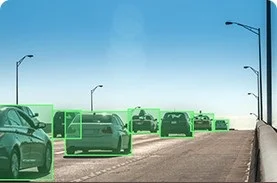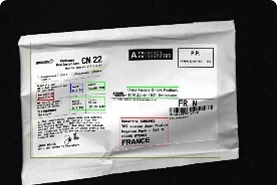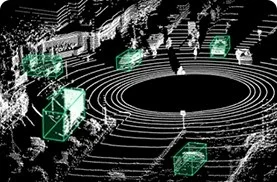
About us
Infoscribe is a data labeling company based in France, with 3 subsidiaries in Madagascar. We were founded in 2016 by 2 individuals who have been working in the outsourcing market in Madagascar for over 20 years.
We began our work on image labeling 4 years ago and have since grown to become a young and dynamic team with expertise in labeling videos, images, 3D images, X-ray images, and point clouds.
We take pride in delivering high-quality data annotation services to our clients, which can be used for training machine learning models and improving user experiences across a variety of domains, including object recognition, computer vision, autonomous driving, and more.
Our services

Human in the loop
Human in the loop is an AI process where a human is involved in validating or invalidating predictions made by the AI. This ensures the accuracy and reliability of the AI predictions. Many sectors such as healthcare, finance, and transportation use human in the loop to ensure the safety and security of their operations. For example, in healthcare, AI is used for early detection of diseases, and human in the loop is used to validate the predictions made by the AI before finalizing the diagnosis.
Show more ...
Data curation
Data curation is the process of collecting, organizing, and validating data before labeling. It involves checking for data consistency, accuracy, and completeness to ensure that the data is suitable for the labeling task. This step is crucial to guarantee the quality and reliability of the labeling results
Show more ...
Key Points and Facial Landmarking
Key points are specific, distinctive features of an object that are essential in image recognition and computer vision. They are essentials in domains such as facial recognition, object tracking, and gesture recognition.
Show more ...
2D Bounding box
A 2D bounding box is a rectangular box that surrounds an object in an image or video frame. 2D bounding boxes is one of the most common annotation techniques. Although it is not the most precise one, it is widely used for counting and classifying objects of interests in a lot of different industries
Show more ...
Data extraction
Data extraction is the process of extracting specific data from digitized documents. This enables businesses to analyze and use the data in various ways, such as improving customer experience, increasing efficiency, and reducing costs. Let us help your businesses unlock valuable insights from your data.
Show more ...
Point cloud annotation
A point cloud is a collection of 3D points that represent an object or environment in space. Point cloud labeling is essential in a variety of industries, such as robotics, self-driving cars, and virtual reality. Our company provides top-quality point cloud labeling services using our annotation tools for 3D bounding box annotation and point cloud segmentation, using clustering techniques.
Show more ...
Segmentation
To train computer vision models for optimal precision, it is essential to use images that have been accurately annotated using semantic segmentation or panoptic segmentation, two related computer vision techniques that differ in their level of detail. Semantic segmentation involves assigning a label to each pixel in an image to classify it into one of several predefined categories. For example, a semantic segmentation model might label every pixel in an image as "car", "tree", "building", or "sky". Panoptic segmentation takes semantic segmentation a step further by adding an "instance" category for individual objects, such as cars or people, enabling the models to differentiate individuals where a semantic segmentation based model would see a group of individuals.
Show more ...
Polygon annotation
Our polygon annotation service accurately outlines areas of interest while excluding distracting background elements to improve the performance of your computer vision model. Although not as detailed as semantic segmentation, polygons are faster to draw, making them ideal for large datasets. Our experienced team provides customizable and high-quality annotations for a variety of computer vision applications, delivering precise and efficient polygon labeling to train your models.
Show more ...